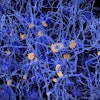Dear AuntMinnie Member,
We hope you've all had a chance to take a deep breath and decompress after last week's whirlwind RSNA conference in Chicago. Here at AuntMinnie.com, we're right back at it, covering all the radiology news that's fit to post.
Our top story of the week was an article from the Friday scientific sessions at RSNA 2018. Researchers from Texas presented their work on what they called black bone MRI -- a technique that enhances the contrast of bone on scans. They believe it can improve the ability of radiologists to detect skull fractures on MRI -- particularly in children who are suspected of being victims of child abuse. Click here for more.
In other MRI news, read about a U.S. study to track long-term brain development in children, and be sure to visit this article on the use of a diffusion-weighted imaging protocol for differentiating malignant and benign pulmonary nodules and masses.
Elastography for soft-tissue lesions
Elastography is becoming a hot topic, as evidenced by the response to a study from U.K. researchers who used a shear-wave elastography technique to analyze soft-tissue lesions initially thought to be benign. While shear-wave elastography might not yet be good enough to work on its own, it improved the performance of ultrasound in lesions that were initially classified as benign or probably benign. Click here for more.
Beyond black box AI
One of the criticisms of artificial intelligence (AI) is the black box nature of the technology -- that is, the fact that AI algorithms arrive at decisions using processes that aren't totally transparent or understood. Well, a group from Yale University developed an algorithm that not only performed better than experienced radiologists in classifying liver lesions on MRI but also explained its decisions. Learn more by clicking here.
Other important articles on AI that we covered this past week included this story on an algorithm that detected all types of brain hemorrhages on noncontrast head CT studies, as well as an article on an algorithm in development for diagnosing pulmonary hypertension that received a "breakthrough" designation from the U.S. Food and Drug Administration.


.fFmgij6Hin.png?auto=compress%2Cformat&fit=crop&h=100&q=70&w=100)





.fFmgij6Hin.png?auto=compress%2Cformat&fit=crop&h=167&q=70&w=250)











